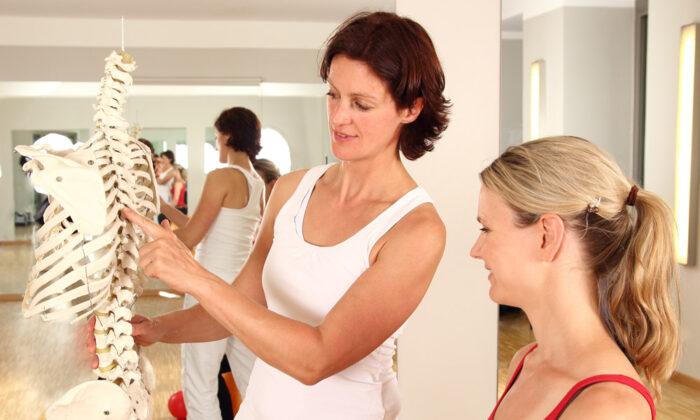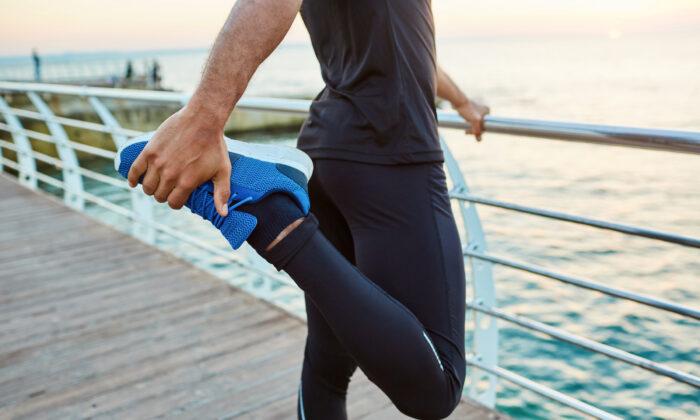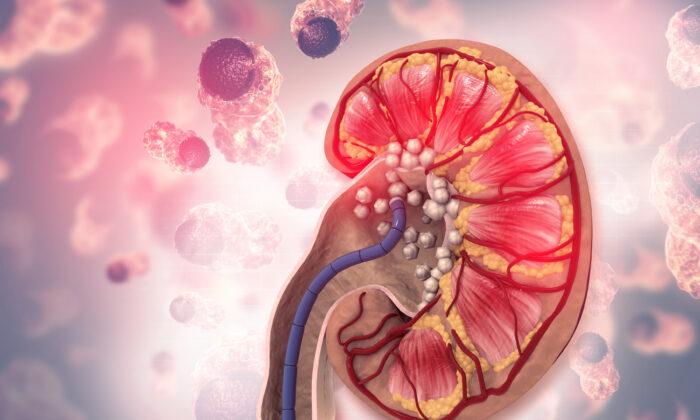Lower back pain is no small matter. In some cases, it’s a sign of poor posture, and a condition that can lead to the deterioration of the spine.
Lumbar spondylolisthesis is a disorder where a vertebra bone on the spine can slip onto the vertebra below it. Patients who start out with some lower back pain can at worst risk paralysis, and can end up in a back brace, unable to rotate the spine or sit for prolonged periods.
How do we avoid this and what measures can one take besides surgery?
What is Lumbar Spondylolisthesis?
Lumbar spondylolisthesis commonly occurs between the third, fourth and fifth lumbar vertebrae.It is when one of the vertebrae has moved backward in position compared to the upper and lower vertebrae connected to it.
For many people this is caused by bad habits like slouching, using incorrect posture in exercise. When we habitually sit or stand with the spine not in a straight position, the spine is prone to compression, which finally results in lumbar spondylolisthesis.
For others, there may have been a traumatic injury, such as a bad fall, wherein the spine is struck and compressed, causing their lumbar spondylolisthesis.
In some cases, an overly large stomach contributes to this, as an uneven amount of force is then exerted on the spine toward the front of the body. Poor muscle support around the lumbar spine area can furthermore make the lumbar vertebrae less stable.
Slipped Vertebrae Cause Various Symptoms, Including Incontinence
At Dr. Wu’s clinic, many patients visit him because of lumbar spondylolisthesis. It can easily cause compression of the sciatic nerve, resulting in many symptoms.For instance, the muscles and ligaments that cover the entire area of the sacrum (at the base of the spine), hips, and thighs will be tense. Why? This is because the body’s muscles are wrapped in a layer of fascia, which is made up of sheets of connective tissue. And once the lumbar vertebrae slip backward, this will cause tension. The tension will grip the fascia, and, combined with the nerves being compressed, the muscles and ligaments become tense.
Preventing Lumbar Spondylolisthesis by Avoiding Poor Sitting Postures and Heavy Lifting
To prevent lumbar spondylolisthesis, first of all, our sitting posture should be correct.Dr. Wu recommends sitting on only the front third of a chair, and says he does this himself. Sit upright, without leaning on the back of the chair.
Some people feel sore when they sit like this, which is a sign that the original curve of your spine has all but disappeared, usually due to a prolonged habit of sitting while leaned back or slouched. If your spine retains its smooth, natural curve, you will feel full of energy sitting upright. In traditional Chinese medicine, Dr. Wu added, this is aided by the fact that the governor meridian becomes smoothed out in this position.
We also need to use correct posture when lifting objects. A lot of people will stoop to pick something up, which is bad for your lumbar region because it can suddenly sprain it. The correct posture is to keep your back straight, squatting to lift the object.
Traditional Chinese medicine also has a term for when this area of the body is weak, Dr. Wu added. It’s called “kidney deficiency,” signified by a relatively weak lumbar muscle system.
In any case, it calls for strengthening the muscles, bones, and ligaments of this area, and toning the kidneys won’t hurt either.

Self-Maintenance is Key in Treating Lumbar Spondylolisthesis
In severe cases of lumbar spondylolisthesis, doctors often recommend surgery as the last resort, but patients are usually scared of surgery.Although traditional Chinese medicine practitioners can help patients recover via manual techniques, it is easy for a restored vertebrae to slip back to the wrong position. This is because after the lumbar spondylolisthesis occurs, the muscles and ligaments surrounding the spine get accustomed to this wrong position over time. Once corrected, the muscles and ligaments are loose in their new, correct position.
According to Dr. Wu’s clinical experience, patients with lumbar spondylolisthesis can only improve to a limited extent through acupuncture and other traditional Chinese medicine treatment methods. In some cases, the results are not very satisfactory even though the patients try lumbar stretching.
Curing Lumbar Spondylolisthesis without Surgery? A Method to Get Rid of Lower Back Pain
Ironically, when physicians are helping patients rehabilitate, some of their movements and actions violate natural ergonomics, and the doctors themselves may also get injured.Thus, Dr. Wu has in his own time been observing and learning self-healing postures, movements, and methods.
Lumbar Spine Self-Improvement Method
To use this method, first of all, you must know the location of your slipped vertebra.Most people have lumbar spondylolisthesis between the third and fourth lumbar vertebrae, between the fourth and fifth, or between the fifth and the sacrum.
If the lumbar spondylolisthesis occurs between the fourth and fifth lumbar vertebrae, its location corresponds roughly to the navel in the front of the body.
If it is between the third and fourth lumbar vertebrae, it corresponds to the position at one finger-breadth above the navel.
And if it is between the fifth lumbar vertebra and the sacrum, it corresponds to the position at one finger-breadth below the navel.
After confirming the location of the slipped vertebra, you need to do the following:
1. Lie down completely on the pillow with the corresponding point aligned with the highest point of the orthopedic pillow.
For instance, assuming the location of the lumbar spondylolisthesis is between the fourth and fifth lumbar vertebrae, you must align your navel with the highest point of the orthopedic pillow, and then lie down on it completely.
Note that during the process of getting down, the aligned positions should not be shifted.
2. In order to maintain the body’s curvature, the upper body should be lowered as much as possible, the head should also be lowered, and the legs should spread apart, so that the hips can move back as much as possible.
3. Then use abdominal breathing, so that the waist will rise and fall with the breathing. The deeper and slower the better when breathing.
4. Put your head slightly against the bed or floor, or put the orthopedic pillow slightly close to the edge of the bed, so that your head can rest on the edge of the bed, and your neck will feel relatively comfortable.

It is recommended to do this exercise three times a day for about 15 to 20 minutes each time. If you feel uncomfortable during this exercise, you can start with five minutes each time and slowly increase the time.
You should do these exercises on an empty stomach, such as before meals, or two hours after meals. Otherwise you may cause discomfort as you press on your stomach.
What is the principle behind this method?
Actually, our spine, which is composed of a sequence of vertebrae, is curved just like an arch.
If one of the bricks on the arch is protruding, we have to put it back into place. However, knocking it back to its original position is clearly not effective. But, if the entire arch can move rhythmically, then all the bricks of the arch will be rearranged while moving, and the protruding brick will naturally be put back into place.
Therefore, you can think of the slipped lumbar vertebra as a brick protruding from the arch. And when you lie on the pillow on your stomach, the lumbar vertebrae will take on an arched shape. Through abdominal breathing, in the process of inhalation and exhalation, the muscles and ligaments around the vertebrae will keep on contracting and relaxing.
Possible Difficulties With the Lumbar Spine Self-Adjustment Method
According to Dr. Wu, patients may encounter some difficulties when doing this exercise:- When lying on your stomach, your shoulders are stretched forward. Some people may feel sore from this, if their shoulder joints are relatively tight.
- Some people will feel sore when they maintain an arc at the waist.
- Some people will feel more soreness in their legs.
What Is This Orthopedic Pillow?
Unfortunately, you can’t just use any pillow. Pillows are generally too soft and won’t give you enough support.Dr. Wu says the top of this pillow must be curved. A hard foam orthopedic pillow is an appropriate material, and you may be able to lightly customize one to suit your needs, or have someone customize one for you.

According to Dr. Wu’s clinical experience, this self-adjustment method is effective for people with loose lumbar muscles. People with tight lumbar muscles recover more slowly with this method. Overall, by using this method, about one-third of the patients with lumbar spondylolisthesis can be rehabilitated. Another one-third of the patients won’t receive satisfactory results, but their back and leg pain can still be improved by more than 50 percent, or even 70 percent. The last one-third of the patients may choose to give up after using the method, as it can be very painful.
For most people, the success rate of this method is over 50 percent. It is a method worth trying before someone really needs to undergo surgery.





